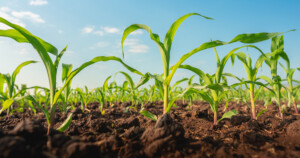By Heather Jennings, PE

Wastewater treatment systems are often influenced/impacted by increased hydraulic and/or COD (chemical oxygen demand) loading as mills add new chemicals or otherwise modify mill operations. These events oftentimes inhibit the wastewater microbial activity, causing “upsets” and, potentially, discharge-limit violations. However, providing the necessary biostimulants and buffers to the microbial system—as we describe in this case study from a paper mill in China—can significantly improve system-upset recovery time and overall operational stability.
To test this process, two specific Probiotic Solutions® liquid bioremediation products were used to address process upsets. We found that this treatment approach improved floc formation—with larger quantities of Vorticellidae and with smaller quantities of rotifers and various other types of protozoans and metazoans—and led to complete system recovery and overall operational stability just one month after application. This biological treatment improved, buffered, diversified, and strengthened the microbiology in the system, which led to improved COD removal and settling and, of course, the main objective of improved water clarity and quality.
Want to read more? To read/download the complete study, just type in your name and email address below and click “Submit.”
Related Posts

Recycled Sewage: What Are We Putting on Our Farmland?
By Jael Batty Sewage sludge is a controversial input for farmers to use. Considering the toxins in today’s wastewater, are our treatments and regulations effective in eliminating micropollutants from sludge?

Does Eutrophication cause Algae Blooms?
Eutrophication is the structural change of water ecosystems that is caused by excess nutrients. Eutrophication results in algal blooms and poor water quality. By Jael Batty In this article, we discuss what causes eutrophication, how it affects the environment, and how it is treated.

This Week in Ag #10
Football may be a game of inches, but farming is a business of fractional inches. Take planting. Seed placement is paramount to the success of a crop. Farmers spend lots of time calculating the optimum rate and depth to plant their seeds based on genetics, soil type, soil conditions, weather, management practices and the desired output

